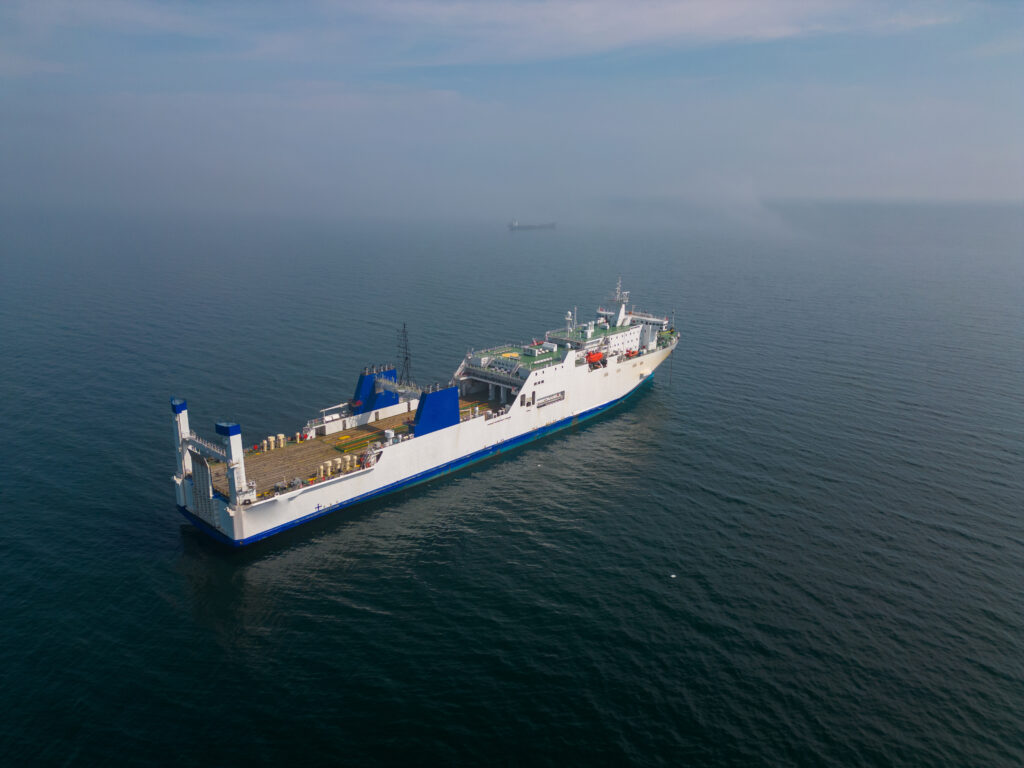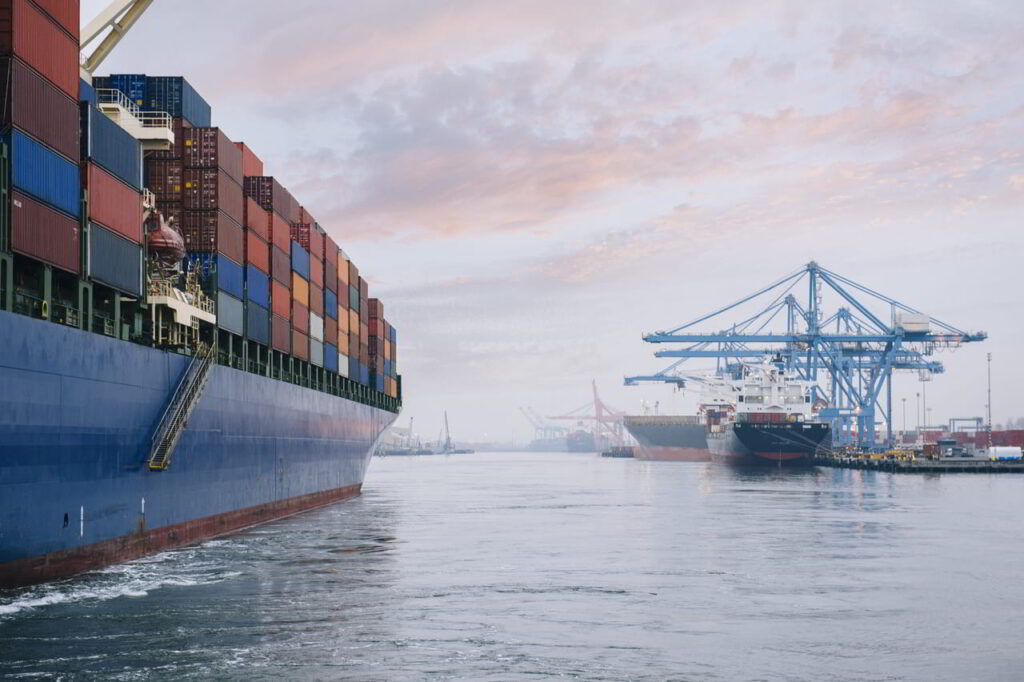Diesel vs Hydrogen Fuel: A Cost Comparison for Ships

Diesel has long been the fuel of choice for maritime use. However, events such as stricter emissions regulations, rising fossil fuel costs, and growing pressure from regulators and customers alike are steering operators toward cleaner, more sustainable propulsion technologies. Among these, hydrogen fuel cell technology has emerged as a frontrunner, offering the promise of zero-emission shipping without sacrificing performance. Buzz aside, however, a practical question remains: is hydrogen fuel actually cheaper than diesel for ships? The answer to this all-important question isn’t black and white—but it’s certainly trending in a direction maritime operators can’t afford to ignore. What Are Hydrogen Fuel Cells? At the core of this conversation lies the hydrogen fuel cell system—a clean energy system that converts hydrogen gas into electricity using an electrochemical process. Unlike internal combustion engines, these fuel cells produce electricity without burning fuel, meaning they emit zero greenhouse gases—just water vapour and heat. In a maritime context, hydrogen fuel cell generators can either fully replace diesel engines or work in hybrid configurations alongside batteries. With increasing advances in hydrogen cell technology, we’re now seeing viable systems capable of powering everything from ferries and tugboats to larger commercial vessels. Hydrogen Fuel Vs Diesel: Breaking Down The Costs To understand whether hydrogen is cheaper than diesel, we need to look beyond pump prices and explore the full spectrum of costs associated with both fuels. 1. Fuel Price Comparison Let’s start with raw fuel costs. Diesel prices fluctuate constantly but generally hover between $700–$1,000 per metric ton for marine bunker fuel. On the other hand, hydrogen prices can vary significantly based on production methods and regional infrastructure. Green hydrogen—produced via electrolysis using renewable energy—is currently still more expensive than diesel, typically ranging from $4–$6 per kilogramme. Meanwhile, blue hydrogen — made using carbon capture — ranges from $1.5-$4 per kilogramme. However, here’s where it gets interesting: hydrogen is much more efficient. Diesel engines only convert about 35–40% of the energy in the fuel into useful work. Hydrogen fuel cells, on the other hand, can hit 50–60% efficiency. That means ships running on hydrogen need less of it to do the same job. So while hydrogen may cost more per unit, it might not cost more per trip. In many cases, depending on the route and vessel, it could even cost less — and if you factor in the penalties from regulations like the European Union’s FuelEU Maritime for emissions from diesel engines, the cost picture becomes even more interesting. 2. Operational and Maintenance Costs One of the hidden costs of diesel propulsion is maintenance. Marine diesel engines require frequent servicing, oil changes, cleaning, and component replacements due to wear from internal combustion and corrosive emissions. Hydrogen fuel cells, on the other hand, have few moving parts and no exhaust systems to clean, making them significantly easier and cheaper to maintain over time. Less downtime, fewer parts to replace, and no need for expensive after-treatment systems (like scrubbers or SCRs) all contribute to lower operating costs for hydrogen-powered vessels in comparison to traditional diesel ships. 3. Infrastructure Costs Infrastructure is currently the biggest hurdle for widespread hydrogen adoption. Most ports aren’t yet equipped with hydrogen refuelling stations, and installing onboard hydrogen storage systems can be complex—particularly for large vessels. But momentum is building. Fuel cell companies, governments, and port authorities are investing heavily in hydrogen infrastructure, particularly in Europe and Asia. Recently, the European Commission just announced a €33 million investment through the Alternative Fuels Infrastructure Facility to develop 35 new hydrogen refuelling stations across the continent. As demand grows, we can expect economies of scale to kick in, driving costs down for everyone — including the maritime industry. For operators already thinking long-term, early adoption might be worth it—especially if you’re working regionally, on shorter routes, or near pilot-ready ports. 4. Compliance and Carbon Penalties This is where hydrogen starts to shine. New regulations—like the FuelEU Maritime initiative, the IMO’s carbon intensity targets, and carbon pricing systems—are making diesel more expensive, not just in direct cost, but in compliance-related fees and retrofitting costs. By switching to hydrogen fuel cell generators, maritime operators can avoid emissions penalties, qualify for green subsidies, and stay ahead of regulatory pressures. In this context, hydrogen becomes not just a clean option—but also a financially strategic one. Real-World Use Cases Across the globe, hydrogen-powered fuel cells are already proving their worth in different use cases, such as within motorsport endurance and rally trials. The MissionH24 program, which aims to develop hydrogen as fuel for motorsport, has used Symbio’s fuel cell stacks as a core power source for its hydrogen-electric racing prototype since 2018. The latest iteration is the H24EVO, which was unveiled in 2024 and uses multi-stack Symbio cells that have proven in static and on-track demos to have 50% higher power density. Powered by these cells, this prototype has successfully completed 24-hour race-distance runs under extreme conditions without a performance drop. Also in 2024, the Pioneer 25 was unveiled — the first-ever hydrogen-powered race car purpose-built for Extreme H, the world’s first hydrogen racing championship. It is powered by the Symbio StackPack™ 75 (the basis of our PROTEUS® 75 maritime fuel cell), and the fuel cell’s capability has been put to stringent test by subjecting it to hot, humid and rocky environments in order to validate fuel cell output stability and structural integrity. As leading fuel cell companies continue to refine their technologies, identify expansion opportunities and reduce production costs, adoption is expected to accelerate significantly across not just the motorsport industry, but also the maritime industry by 2030. Is Hydrogen Ready for Prime Time? While diesel still dominates the current marine fuel landscape, it’s increasingly being seen as a short-term solution as the transition towards cleaner energy gains momentum. Hydrogen fuel cell technology is rapidly maturing, with lower costs, higher efficiency, and greater political will driving it forward. For short-sea shipping, ferries, harbour vessels, and inland cargo ships, hydrogen is already a competitive option. Larger vessels with longer ranges may
Green Hydrogen vs Blue Hydrogen in Maritime Decarbonisation

Globally, the maritime industry is under growing pressure to reduce its carbon footprint. The International Maritime Organization (IMO) reports that shipping accounts for around 3% of annual global carbon dioxide emissions — due in large part because heavy fuel oil and marine diesel oil are typically preferred fuel choices. Hydrogen, however, is fast emerging as a cleaner, scalable fuel alternative that could be a key driver for the industry’s road to net zero. It burns clean and emits only water when used in a fuel cell, plus enables faster refuelling and higher energy density compared to batteries, making it more viable for large vessels and long-haul shipping. When considering hydrogen, it’s important to remember that it has two forms that are most relevant to the decarbonisation agenda: green hydrogen and blue hydrogen. They differ in how they are produced and come with unique benefits and limitations. Let’s take a look at them both. Understanding blue hydrogen Blue hydrogen is made by reforming natural gas — which is a type of fossil fuel — into hydrogen and carbon dioxide via a process known as steam methane reforming. Part of this involves using carbon capture and storage (CCS) technologies to capture carbon dioxide (CO₂) emissions generated. It’s essential to its definition as ‘blue’ hydrogen instead of ‘grey’ hydrogen, which is akin to burning fossil fuels in terms of CO₂ emission levels produced. While not completely emissions-free, blue hydrogen offers significant environmental advantages over conventional fossil fuels because CCS is capable of capturing around 85 to 95% of CO₂ emissions. It also doesn’t emit pollutants such as sulphur oxides, nitrogen oxides and particulate matter, which fossil fuels do. Another important advantage of blue hydrogen is that it can leverage existing natural gas pipelines and infrastructure to scale up quickly. This enables a more consistent production process and stabilises supply availability, thus allowing blue hydrogen to be adopted more easily. Unsurprisingly, it’s often thought of as a transitional fuel for maritime companies looking to take their first steps into decarbonisation. Understanding green hydrogen Green hydrogen is produced via electrolysis, where water is split into hydrogen and oxygen using electricity generated from renewable sources such as wind or solar. Because no carbon emissions are involved at any stage, green hydrogen is considered the cleanest form of hydrogen and makes it ideal for companies looking to meet IMO decarbonisation targets. Like blue hydrogen, green hydrogen doesn’t emit pollutants — but it goes a step further by being the only hydrogen type that is truly zero-carbon across its entire lifecycle if powered by renewables. It can be stored onboard or supplied via bunkering infrastructure and used in a variety of propulsion systems, including fuel cells and internal combustion engines adapted for hydrogen. Several key hurdles remain to the mainstream adoption of green hydrogen. These include a high upfront capital cost, as well as needing large quantities of water for production. Additionally, the infrastructure for hydrogen storage, transport, and bunkering, as well as global production volume, simply isn’t there yet. However, with global investment in green hydrogen projects accelerating, costs are expected to drop significantly over the next decade. In fact, the International Renewable Energy Agency (IRENA) forecasts that green hydrogen could become cost-competitive with blue hydrogen by the early 2030s—possibly sooner in regions with abundant renewables. Go blue or go green? Many companies are choosing to adopt a phased approach by incorporating blue hydrogen as a transitional fuel while planning to switch to green hydrogen as the infrastructure improves and costs drop. You could try using pilot projects to test small-scale adoption and gather data on performance, fuel availability, and regulatory compliance. The good news is that the equipment (e.g. fuel cells, tanks) is agnostic to the source of hydrogen. Why the hydrogen question matters Decarbonisation isn’t just an ideal — it’s now an objective that companies must strive to comply with or face real repercussions. The IMO has set a target to cut shipping emissions by 50% by 2050 (compared to 2008 levels), with tighter rules expected in the coming years. This has created strong regulatory tailwinds for zero-emission marine fuels. For instance, the European Union’s FuelEU Maritime regulation will require ships to use cleaner fuels starting in 2025. Green shipping corridors are being developed to connect ports with hydrogen and ammonia bunkering capabilities. Even here in Singapore, the government has introduced a Maritime Decarbonisation Blueprint that supports low- and zero-carbon fuel adoption — including hydrogen. This momentum is making hydrogen maritime solutions increasingly attractive for long-term investment and compliance, which is why maritime companies need to start developing an understanding of hydrogen’s potential as the new fuel standard and planning their adoption timeline so that they won’t get left behind. Fuel of the future Both green and blue hydrogen will likely play important roles in the maritime decarbonisation agenda in the short to medium term. As the industry charts a new course, one angle to consider is that perhaps the ideal choice isn’t either blue hydrogen or green hydrogen, but both at different phases — tailored to your region, fleet, and decarbonisation goals. Looking to explore hydrogen fuel cell technology for your fleet? At Proteus Energy, we are an experienced provider of integrated fuel cell power solutions and hydrogen storage solutions designed specifically to help fleets make real progress on their decarbonisation journey. Book a consultation with us today to work together towards achieving a more sustainable future.
The Hidden Costs of Marine Diesel – Why It’s Time for a Cleaner Alternative

The global shipping industry keeps the world connected – from the clothes we wear to the food on our tables, much of what we rely on travels by sea. But beneath this smooth flow of goods is an energy system starting to show its cracks: marine diesel. While marine diesel has powered ships for decades, its actual costs (environmental, economic, and regulatory) are becoming harder to ignore. As industries and governments move towards cleaner, low-carbon solutions, the question isn’t just if shipping should change, but how soon it must. In this blog, we’ll unpack the hidden costs of marine diesel, explore the sector’s mounting pressures, and introduce hydrogen as one of the most promising alternatives to marine fuel. The Problems With Marine Diesel Environmental Marine diesel has long been the fuel of choice because it’s energy-dense, readily available, and relatively affordable. But burning it comes at a price far beyond the fuel invoice: Even with cleaner-burning “low-sulphur” fuels, CO₂ emissions remain a core problem. In short, marine diesel pollution is a problem we can no longer ignore. Economical It’s easy to think diesel remains the cheapest option. After all, it’s an established fuel with global supply chains. But the full cost picture is more complex. As regulations tighten and the world demands cleaner operations, sticking with marine diesel will likely become more expensive, not less. Regulatory Stricter rules are hitting the shipping world – and many are already in effect. For shipping businesses, keeping pace isn’t just about following the rules but about staying competitive as the entire industry moves towards a cleaner, greener future. Why We’re Shifting Towards Hydrogen While biofuels, ammonia, and battery-electric systems are all on the table, hydrogen has emerged as one of the most exciting options thanks to its potential to decarbonise shipping completely. When used in fuel cells, hydrogen creates electricity through a chemical reaction, with the only thing it leaves behind being water vapour. This means: And, if the hydrogen is produced using renewable energy (so-called “green hydrogen”), the entire fuel cycle can be near carbon-free, allowing the shipping industry to break free from fossil fuels altogether. What’s Holding Hydrogen Back (And How Are We Overcoming It?) Shifting to hydrogen isn’t as simple as swapping one fuel for another. It demands a full rethink of how ships are designed, how fuel is stored on board, and how refuelling is handled at ports. That’s where we come in. At Proteus Energy, we’re not just developing hydrogen-powered engines; we’re creating a complete, integrated solution such as: This ecosystem approach is key to making hydrogen a practical solution, not just a theoretical one. Why the Time for Change Is Now Shipping can’t afford to stick with old fuel systems forever. The future demands cleaner, smarter alternatives. Hydrogen is one of the few solutions that can eliminate shipping emissions entirely, and with technology advancing fast, it’s ready for real-world use. At Proteus Energy, we combine cutting-edge hydrogen technology, deep maritime expertise, and a commitment to practical, scalable solutions. We don’t just talk about clean shipping – we deliver it. Book a consultation with us today to partner with us and future-proof your fleet with a trusted leader driving real change in the industry.

